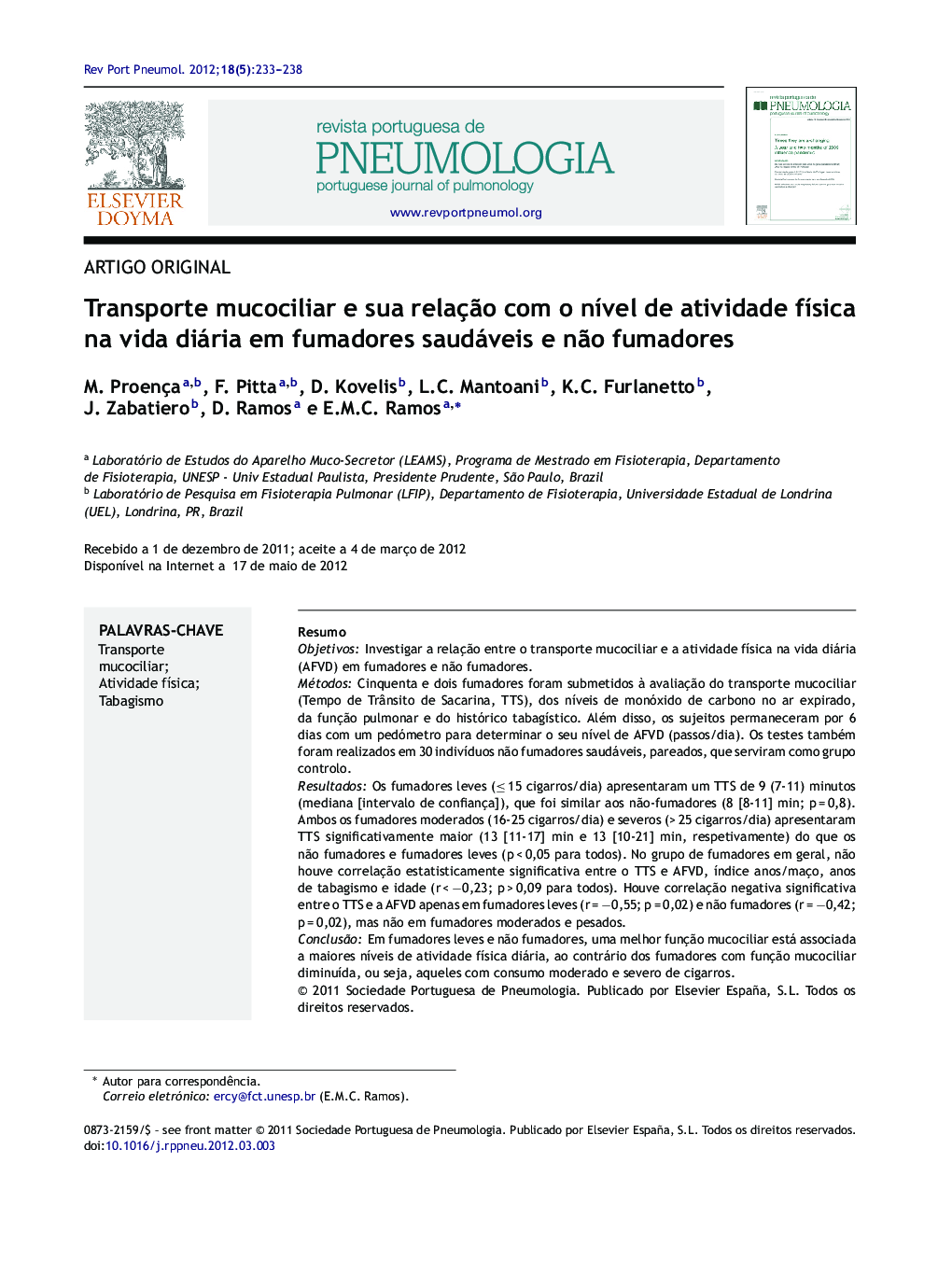| Article ID | Journal | Published Year | Pages | File Type |
|---|---|---|---|---|
| 4213786 | Revista Portuguesa de Pneumologia | 2012 | 6 Pages |
ResumoObjetivosInvestigar a relação entre o transporte mucociliar e a atividade física na vida diária (AFVD) em fumadores e não fumadores.MétodosCinquenta e dois fumadores foram submetidos à avaliação do transporte mucociliar (Tempo de Trânsito de Sacarina, TTS), dos níveis de monóxido de carbono no ar expirado, da função pulmonar e do histórico tabagístico. Além disso, os sujeitos permaneceram por 6 dias com um pedómetro para determinar o seu nível de AFVD (passos/dia). Os testes também foram realizados em 30 indivíduos não fumadores saudáveis, pareados, que serviram como grupo controlo.ResultadosOs fumadores leves (≤ 15 cigarros/dia) apresentaram um TTS de 9 (7-11) minutos (mediana [intervalo de confiança]), que foi similar aos não-fumadores (8 [8-11] min; p = 0,8). Ambos os fumadores moderados (16-25 cigarros/dia) e severos (> 25 cigarros/dia) apresentaram TTS significativamente maior (13 [11-17] min e 13 [10-21] min, respetivamente) do que os não fumadores e fumadores leves (p < 0,05 para todos). No grupo de fumadores em geral, não houve correlação estatisticamente significativa entre o TTS e AFVD, índice anos/maço, anos de tabagismo e idade (r < −0,23; p > 0,09 para todos). Houve correlação negativa significativa entre o TTS e a AFVD apenas em fumadores leves (r = −0,55; p = 0,02) e não fumadores (r = −0,42; p = 0,02), mas não em fumadores moderados e pesados.ConclusãoEm fumadores leves e não fumadores, uma melhor função mucociliar está associada a maiores níveis de atividade física diária, ao contrário dos fumadores com função mucociliar diminuída, ou seja, aqueles com consumo moderado e severo de cigarros.
ObjectivesTo investigate the relationship between mucociliary transport and physical activity in daily life (PADL) in smokers and nonsmokers.MethodsFifty-two current smokers were submitted to assessment of mucociliary transport (Sacharin Transit Time, STT), carbon monoxide levels in the exhaled air, lung function and smoking history. In addition, subjects kept a pedometer worn at the waist for six days in order to determine their level of PADL (steps/day). The tests were also performed on 30 matched healthy nonsmokers who served as control group.ResultsLight smokers (≤15 cigarettes/day) had a STT of 9 (7-11) min (median [confidence interval]), which was similar to nonsmokers (8 [8-11]min; p = 0.8). Both moderate (16-25 cigarettes/day) and heavy (>25 cigarettes/day) smokers had significantly higher STT (13 [11-17] min and 13 [10-21] min, respectively) than nonsmokers and light smokers (p < 0.05 for all). There was no difference in the number of steps/day between any of the groups (p > 0.05 for all). In the general group of smokers, STT was not significantly correlated with PADL, pack/years index, years of smoking or age (r < −0.23; p > 0.09 for all). There was significant negative correlation between STT and PADL only in light smokers (r = −0.55; p = 0.02) and nonsmokers (r = −0.42; p = 0.02), but not in moderate and heavy smokers.ConclusionIn light smokers and non-smokers, better mucociliary function is associated to higher daily physical activity level, as opposed to the decreased mucociliary function observed in smokers, i.e., those with moderate and heavy cigarette consumption.
